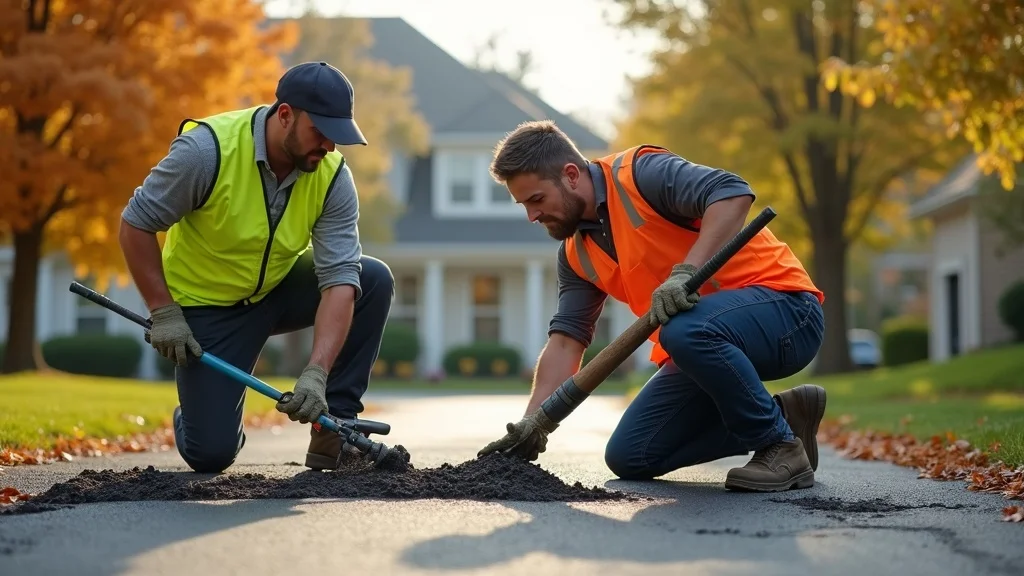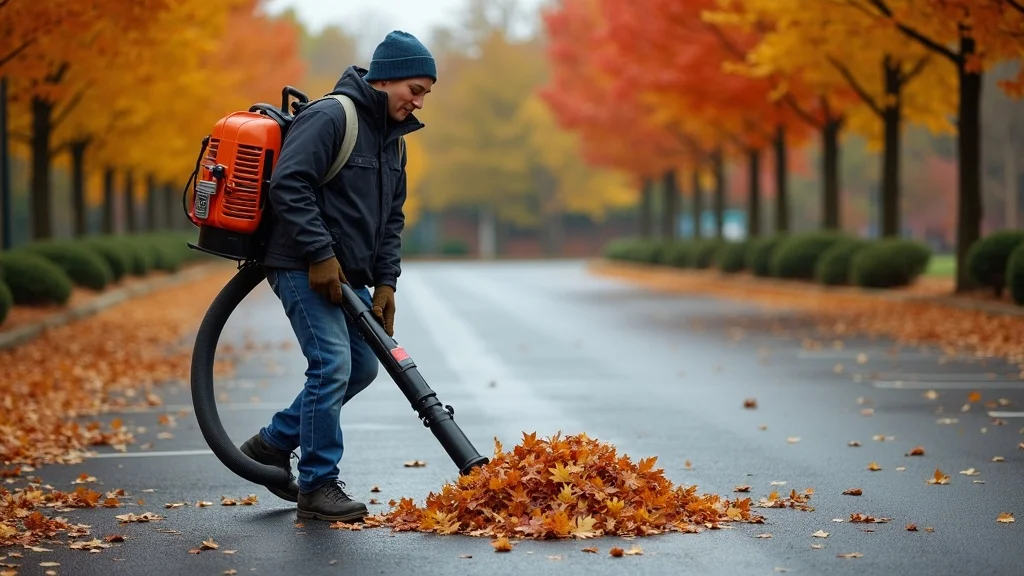Did you know? Pennsylvania roads lose up to40% more surface integrity during freeze–thaw cycles when fall maintenance is skipped—costing homeowners and businesses thousands in repairs by spring. If you’ve put off fall driveway or parking lot prep, November is truly your last opportunity to protect your asphalt before winter weather carves out costly cracks and potholes.
What You’ll Learn: Winter Asphalt Protection Essentials for Pennsylvania
-
Why November is critical for winter asphalt protection in Pennsylvania
-
How freeze–thaw cycles accelerate damage to asphalt driveway and asphalt pavement
-
Immediate steps to protect your asphalt before severe winter weather
-
Best practices for preventing water intrusion and snow and ice damage
-
How to conduct a DIY inspection and know when to call Legacy Paving
Startling Fact: Why November Matters Most for Winter Asphalt Protection in PA
“Pennsylvania roads lose up to 40% more surface integrity during freeze–thaw cycles when fall maintenance is skipped—costing homeowners and businesses thousands in repairs by spring.”
While cold weather can sneak up quickly in the Northeast, the real culprit is the dramatic freeze–thaw swings unique to Pennsylvania’s November climate. When nights dip below freezing and days warm up, unprotected asphalt surfaces become vulnerable to rapid crack and pothole formation. November is squeeze-time: leaves clog drains, moisture gets trapped beneath the asphalt surface, and the initial frosts kick off a destructive cycle. If you wait until December, your chances of stopping winter damage shrink dramatically—and you might miss the window for necessary crack filling, patch repairs, and weather-sensitive sealcoating.

Understanding Freeze–Thaw Cycle: The Biggest Threat to Your Asphalt Driveway and Parking Lot
The freeze–thaw cycle is the #1 reason asphalt pavement fails prematurely in Pennsylvania. Water permeates even small cracks or porous areas in your asphalt driveway or parking lot. When temperatures drop overnight, trapped water freezes and expands, prying those cracks slightly wider every time. By day, the ice thaws—inviting more water inside and repeating the process. This relentless expansion and contraction destroys surface integrity, turning hairline cracks into hazardous potholes by late winter or early spring. Lehigh Valley’s wide day/night temperature swings make this cycle even more severe. Without winter asphalt protection and regular maintenance, you’re virtually guaranteeing expensive repairs come spring.
For property owners looking to maximize the longevity of their pavement, it’s also worth considering how proper line striping and pavement markings can help maintain safety and organization throughout the winter months. Well-marked lots not only improve traffic flow but also reduce the risk of accidental damage during snow removal and icy conditions.
How Water, Cold, and Temperature Swings Damage Asphalt Pavement
-
Water seeps into cracks and joints
-
Nighttime freezes expand trapped water, widening cracks
-
Daytime thaws allow more water infiltration, compounding damage
-
Lehigh Valley’s day/night temperature swings intensify the thaw cycle risk
Any small cracks that go untreated in the fall will inevitably grow larger under early winter’s freeze–thaw cycle. As moisture gets trapped, microscopic expansion splits the asphalt, allowing even more infiltration. This cycle not only damages driveways, but is also a major issue for parking lots where foot and vehicle traffic drive water deeper. Debris can trap moisture, creating standing water that further accelerates breakdown. By the time spring arrives, what started as a couple of overlooked cracks can result in large potholes or extensive surface spalling, requiring full asphalt patch repairs.

Fast Wins: Critical November Tasks for Winter Asphalt Protection
There are still a few high-impact steps you can take this month to protect your asphalt driveway and parking lot from winter damage. Acting now means you’ll minimize water infiltration, prevent small cracks from growing, and give your pavement the best shot at surviving the season with its structural integrity intact. Here’s your November punch list:
Crack Filling, Cold Patch, and Pothole Repairs—Protect Your Asphalt Driveway Now
-
Use cold patch for temporary fixes on potholes
-
Prioritize crack sealing to prevent water intrusion
-
Focus on recurring trouble spots in parking lot and driveway surfaces
Crack filling is your first and best line of defense. Rubberized or asphalt-based sealants can fill small cracks and prevent water from seeping in. For potholes, an all-weather cold patch (also known as cold mix asphalt) offers a quick, temporary repair that will hold through the winter. Prioritize areas where water or debris collects or where cracking is persistent year to year. For larger cracks (>1/2″), or for high-traffic parking lot repairs, it’s time to call a professional.
|
Task |
Recommended Product |
Temperature Limit |
When to Call a Pro |
|---|---|---|---|
|
Crack Filling |
Rubberized sealant |
40°F and rising |
>1/2″ wide cracks |
|
Cold Patch Repairs |
All-weather cold mix |
Above freezing |
For high-traffic/large areas |
|
Sealcoating |
Acrylic or asphalt emulsion |
Above 50°F, dry weather |
Best completed by mid-November |
Sealcoating: Weather, Temperature, and When to Wait
-
Check current and expected temperatures before scheduling
-
Proper curing needs temps above 50°F
-
Postpone if rain is forecasted within 24 hours
Sealcoating is a powerful shield for both residential and commercial asphalt surfaces, but the timing is crucial. Sealers require a minimum surface and air temperature of 50°F—and a 24-hour window of dry, mild weather—to cure properly and adhere to your asphalt driveway or parking lot. If temperatures dip or rain sets in too soon, the coating won’t bond, leaving your pavement exposed to winter weather. In Pennsylvania, you’ll want to finish sealcoating by mid-November at the latest, or wait for early spring. Unsure about your project timing? Contact Legacy Paving for a weather assessment.

Maintain Drainage and Gutter Runoff to Prevent Water Damage
-
Clear all leaves and organic debris from drains
-
Direct gutter runoff away from asphalt
-
Standing water increases the risk of freeze–thaw damage
Standing water is the silent enemy of every asphalt surface. Clogged drains and overflowing gutters funnel water directly onto vulnerable areas of your driveway and parking lot. As leaves fall in autumn, it’s vital to keep all storm drains, swales, and gutters free of debris—a single overlooked clog can set the stage for freeze–thaw damage that undermines your pavement. Check for puddling after a rain and make any necessary adjustments to spouting or grading. In high-risk areas, consider a full drainage assessment to prevent major issues all winter long.
Leaf & Debris Management: Prevent Surface Breakdown and Standing Water
-
Blowers and brooms: keep driveway and parking lot clean
-
Schedule sweeper service if needed
-
Check storm drains for clogs after leaf drop
Leaves, twigs, and organic debris can trap moisture against your asphalt driveway. This not only accelerates the freeze–thaw cycle and increases crack risk, but also promotes algae growth and staining that can weaken your surface over time. Use a blower, broom, or even a commercial snow blower set on “blow” mode to keep your lot and driveway clear. For properties with large parking lots or persistent debris, a monthly sweeping service is a smart and cost-effective investment. Always finish with a storm drain check—debris-induced standing water is responsible for plenty of avoidable winter damage across Lehigh Valley properties.

Snow Season Prep: Smart Steps to Protect Your Asphalt Pavement
Early snow can arrive in Pennsylvania by late November, and the resulting salt, plows, and ice can be exceedingly harsh on unprepared asphalt surfaces. Preparing now prevents last-minute panic—and costly errors.
Mark Edges & Curbs for Snow Plows
Use high-visibility stakes or reflective markers to define driveway and parking lot boundaries. This ensures snow plow operators won’t inadvertently damage the asphalt surface or concrete curbing, especially where raised seams or low joints are present.
Choose Asphalt-Compatible De-Icers
-
Avoid rock salt where possible—use calcium magnesium acetate or potassium chloride
-
De-icing products should minimize corrosion and surface damage
Standard rock salt is notorious for accelerating freeze–thaw-induced damage and corroding not only the surface but also adjacent landscaping and concrete. Choose products like calcium magnesium acetate or potassium chloride—these alternatives are less corrosive and tailored for both residential driveways and commercial parking lots, preserving both safety and surface integrity during winter weather. Always read the label to ensure the product is safe for asphalt pavement.
Prevent Plow Damage at Raised Seams and Joints
-
Mark raised edges and sunken joints
-
Instruct plow operators to lift blades at critical transitions
Plow blades can catch on hidden edges—especially after the ground freezes or a thin snow crust hides uneven seams. Marking these transitions isn’t just about aesthetics; it’s crucial for prolonging the lifespan of both your driveway and parking lot. Proper prep—combined with communication to your snow removal crew—helps prevent costly gouges, chunks, and accidental curb strikes that require full-depth asphalt patch repairs come spring.
DIY Inspection: 7-Minute Self-Assessment for Winter Asphalt Protection
-
Photograph cracks, potholes, and drainage issues
-
Measure crack widths and note length
-
Check for soft spots along driveway edges
-
When in doubt, call Legacy Paving for a free site assessment
Set aside 7 minutes to walk your asphalt surfaces before the first major freeze. Start by photographing visible cracks, potholes, or surface dips—these pics are helpful whether you schedule a DIY repair or call for professional help. Use a tape measure to note any cracks wider than a quarter inch, as these will need prompt sealing. Check around driveway or lot edges for “soft spots” that indicate water undermining or sub-base erosion. If you spot unresolved drainage or unclear trouble spots, book a free assessment with Legacy Paving—fast action now can mean no costly surprises in March.

Plan Now, Save Big: Book Your Spring Asphalt Maintenance Early
Why wait until spring when you can schedule priority repairs and lock in bundle discounts for 2024? Early booking gives you first choice of dates as soon as weather permits and ensures you don’t pay premium rates for crisis repairs.
Why Schedule Repairs and Sealcoating Before December 15? (Bundle Pricing Advantage)
-
Secure priority scheduling as soon as temperatures rise
-
Get bundled pricing for crack filling, patching, and sealcoating
-
Take advantage of free assessments and tailored repair plans
Scheduling your post-winter asphalt maintenance before December 15 guarantees you a spot at the front of the spring line—plus bundle discounts you won’t get later. Legacy Paving offers comprehensive plans that combine crack filling, hot-mix patching, and fresh sealcoating for both residential driveways and busy commercial parking lots. You’ll receive a detailed repair report and personalized recommendations for protecting your asphalt investment.
Request a Quote: Secure Your Winter Asphalt Protection Today
Contact Legacy Paving now—or call 610 751-0998—to schedule a winter readiness check, get a free repair estimate, or learn about November bundle pricing for pre-spring work.
Watch: How the Freeze–Thaw Cycle Impacts Your Asphalt Driveway
Animated illustration: Learn how water, freezing temperatures, crack sealing, patch repairs, and leaf removal affect pavement—and why November is the time to act.
People Also Ask: Expert Answers
Can you seal asphalt in the winter?
-
Sealcoating requires temperatures above 50°F and dry conditions; winter applications are not recommended except for special cold-mix products. For most of Pennsylvania, late October to mid-November is the safe window.
Does a cold asphalt patch work?
-
Cold patch is a temporary solution for emergency pothole filling during winter asphalt protection; it will help maintain surface integrity until permanent repairs can be made in spring.
What temperature is too cold to do asphalt?
-
Most asphalt paving and sealing should be done only when both air and surface temps are above 50°F. Below that, curing is compromised and repairs may not last.
What is the best driveway coating for winter conditions?
-
Acrylic or asphalt emulsion sealers designed for cold climates provide the best winter asphalt protection for driveways. Apply only in proper weather window for best results.
Key Takeaways: November Winter Asphalt Protection in Pennsylvania
-
November is the last window before freeze–thaw damage accelerates
-
Focus on crack filling, cold patch, cleaning, and drainage fixes now
-
Book site assessments and lock in early bird savings for spring maintenance
-
Proper prep prevents potholes and major repairs down the line
Conclusion: Prevent Freeze–Thaw Damage with Proactive Winter Asphalt Protection
Book Your November Asphalt Checkup—Stop Winter Damage Before It Starts
-
Call Us at 610 751-0998 or visit LegacyPavingPA.com

If you’re interested in taking your property’s curb appeal and safety to the next level, consider exploring the broader benefits of professional pavement solutions. From comprehensive maintenance to advanced marking strategies, the full range of services offered by Legacy Paving can help you create a lasting impression and ensure your surfaces are ready for every season. Discover how a proactive approach to asphalt care can save you money, reduce liability, and enhance the overall value of your property. Now is the perfect time to plan ahead and invest in solutions that deliver year-round performance and peace of mind.
